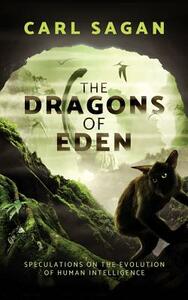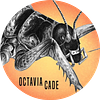Take a photo of a barcode or cover
128 reviews for:
The Dragons of Eden: Speculations on the Evolution of Human Intelligence
Carl Sagan
128 reviews for:
The Dragons of Eden: Speculations on the Evolution of Human Intelligence
Carl Sagan
informative
A little dated at this point, but Carl Sagan is always good for some brain expansion.
„Lumea este foarte bătrână, iar fiinţele umane foarte tinere. Evenimentele importante din viaţa noastră se măsoară în ani, sau chiar în mai puţin; vieţile noastre în zeci de ani; genealogiile familiilor noastre în secole; iar cele mai vechi mărturii istorice datează de milenii. Dar înaintea noastră au existat evenimente teribile, care s-au desfăşurat în trecut pe perioade extraordinar de mari, şi despre care ştim puţine lucruri, atât din cauza absenţei unor documente scrise, cât şi a dificultăţii de a cuprinde imensitatea intervalelor respective de timp.
Cu toate acestea, putem data evenimente ― petrecute în trecutul îndepărtat. Stratificarea geologică şi datarea prin procedee radioactive oferă informaţii asupra evenimentelor arheologice, paleontologice şi geologice; iar teoria astrofizica furnizează date asupra vârstei planetelor, stelelor şi a Căii Lactee, precum şi o estimare a timpului scurs de la extraordinarul eveniment numit Big Bang ― o explozie care a cuprins întreaga materie şi energie din universul actual. Marele Bum poate reprezenta naşterea universului, sau poate reprezenta doar sfârşitul unui ciclu în cursul căruia informaţiile referitoare la istoria de dinainte a universului au fost distruse. În mod cert însă, acesta este cel mai vechi eveniment despre care avem vreo mărturie.”
Cu toate acestea, putem data evenimente ― petrecute în trecutul îndepărtat. Stratificarea geologică şi datarea prin procedee radioactive oferă informaţii asupra evenimentelor arheologice, paleontologice şi geologice; iar teoria astrofizica furnizează date asupra vârstei planetelor, stelelor şi a Căii Lactee, precum şi o estimare a timpului scurs de la extraordinarul eveniment numit Big Bang ― o explozie care a cuprins întreaga materie şi energie din universul actual. Marele Bum poate reprezenta naşterea universului, sau poate reprezenta doar sfârşitul unui ciclu în cursul căruia informaţiile referitoare la istoria de dinainte a universului au fost distruse. În mod cert însă, acesta este cel mai vechi eveniment despre care avem vreo mărturie.”
Fascinating exploration of the phenomenon of intelligence - mostly human intelligence, although one of the chapters has a convincing argument that primates and animals such as dolphins have sufficient capacity to warrant the same legal protections as humans. It is, of course, an evolutionary argument, and one which Sagan applies to all the hominins (as much as he can, at least, for physical evidence is hardly exhaustive in some cases). The complex interaction of biology and environment has had a profound effect on our ability to think, and in consequence our bodies have developed some very strange characteristics. For instance, the left-hand/right-hand sides of the brain and how they process sensory information is delightfully weird, and the experiments and case studies which Sagan uses to help explain the science behind the history of the brain made the book clear and accessible.
This is one of my favorite books of all time. Thank you Carl Sagan.
informative
reflective
medium-paced
I thought this was pretty good, perhaps I needed to read it physically but I found it a little hard to comprehend.
“The mind of man is capable of anything - because everything is in it, all the past as well as all the future.”
I read this book for a class. And I'm truly glad I did because it was very good. The great thing about this book it's that it's not just a divulgation reading, but a text that often asks you questions while you read, and allows you to wonder about a surprising range of topics, from animal mistreat to abortion.
I like to think that just by reading this book many people would question their posture in such topics, and I also find it appalling that even all those years after Sagan wrote this many debates still stand, and many postures still need changing.
I like to think that just by reading this book many people would question their posture in such topics, and I also find it appalling that even all those years after Sagan wrote this many debates still stand, and many postures still need changing.
Sin ser Sagan biólogo evolutivo ni neuroanatomista, le sale un relato muy interesante sobre la evolución del cerebro hasta llegar al neocórtex avanzado de los sapiens. Por el camino nos cuenta mil cosas interesantes y nos enseña a ver cómo todas las partes que vamos conociendo sobre él van encajando en una única historia coherente. Hacia el final del libro cuenta como ciertas algunas cosas que eran solo hipótesis (relación entre el sistema límbico y la capacidad onírica, por ejemplo, y cómo uno lleva a la otra), y otras cosas en l as que aventura cuando parece que enuncia.
Sigue siendo un pilar de la divulgación científica y un libro imprescindible.
Sigue siendo un pilar de la divulgación científica y un libro imprescindible.







